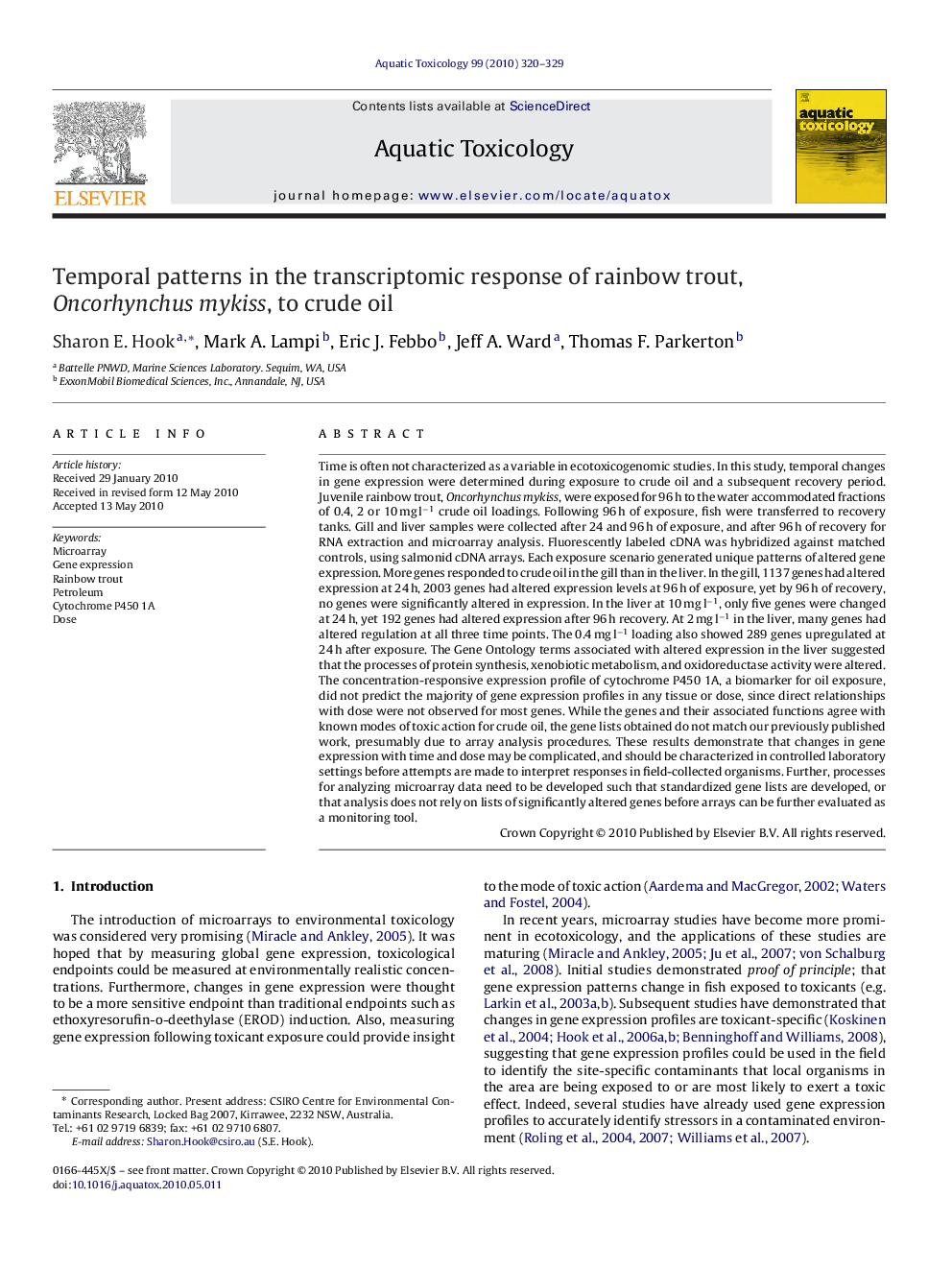| کد مقاله | کد نشریه | سال انتشار | مقاله انگلیسی | نسخه تمام متن |
|---|---|---|---|---|
| 4530159 | 1324685 | 2010 | 10 صفحه PDF | دانلود رایگان |
عنوان انگلیسی مقاله ISI
Temporal patterns in the transcriptomic response of rainbow trout, Oncorhynchus mykiss, to crude oil
دانلود مقاله + سفارش ترجمه
دانلود مقاله ISI انگلیسی
رایگان برای ایرانیان
کلمات کلیدی
موضوعات مرتبط
علوم زیستی و بیوفناوری
علوم کشاورزی و بیولوژیک
علوم آبزیان
پیش نمایش صفحه اول مقاله

چکیده انگلیسی
Time is often not characterized as a variable in ecotoxicogenomic studies. In this study, temporal changes in gene expression were determined during exposure to crude oil and a subsequent recovery period. Juvenile rainbow trout, Oncorhynchus mykiss, were exposed for 96 h to the water accommodated fractions of 0.4, 2 or 10 mg lâ1 crude oil loadings. Following 96 h of exposure, fish were transferred to recovery tanks. Gill and liver samples were collected after 24 and 96 h of exposure, and after 96 h of recovery for RNA extraction and microarray analysis. Fluorescently labeled cDNA was hybridized against matched controls, using salmonid cDNA arrays. Each exposure scenario generated unique patterns of altered gene expression. More genes responded to crude oil in the gill than in the liver. In the gill, 1137 genes had altered expression at 24 h, 2003 genes had altered expression levels at 96 h of exposure, yet by 96 h of recovery, no genes were significantly altered in expression. In the liver at 10 mg lâ1, only five genes were changed at 24 h, yet 192 genes had altered expression after 96 h recovery. At 2 mg lâ1 in the liver, many genes had altered regulation at all three time points. The 0.4 mg lâ1 loading also showed 289 genes upregulated at 24 h after exposure. The Gene Ontology terms associated with altered expression in the liver suggested that the processes of protein synthesis, xenobiotic metabolism, and oxidoreductase activity were altered. The concentration-responsive expression profile of cytochrome P450 1A, a biomarker for oil exposure, did not predict the majority of gene expression profiles in any tissue or dose, since direct relationships with dose were not observed for most genes. While the genes and their associated functions agree with known modes of toxic action for crude oil, the gene lists obtained do not match our previously published work, presumably due to array analysis procedures. These results demonstrate that changes in gene expression with time and dose may be complicated, and should be characterized in controlled laboratory settings before attempts are made to interpret responses in field-collected organisms. Further, processes for analyzing microarray data need to be developed such that standardized gene lists are developed, or that analysis does not rely on lists of significantly altered genes before arrays can be further evaluated as a monitoring tool.
ناشر
Database: Elsevier - ScienceDirect (ساینس دایرکت)
Journal: Aquatic Toxicology - Volume 99, Issue 3, 1 September 2010, Pages 320-329
Journal: Aquatic Toxicology - Volume 99, Issue 3, 1 September 2010, Pages 320-329
نویسندگان
Sharon E. Hook, Mark A. Lampi, Eric J. Febbo, Jeff A. Ward, Thomas F. Parkerton,